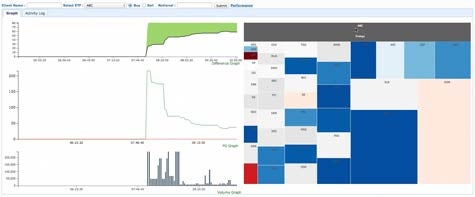IT organizations tend to embrace appliances when the compute power available on a server becomes constrained. By offloading a particular workload to an appliance, the IT organization gains headroom on their servers for other applications. For that reason, we’ve seen the emergence of one appliance approach or another to run analytics workloads. The trouble is that appliances introduce a lot of management overhead that tends to drive up the total cost of enterprise IT.
With the introduction of multicore processors, that dynamic is starting to change. New in-memory databases take advantage of all those cores to process transactions and analytics simultaneously in real time, thereby eliminating the need for separate appliances.
One of the early pioneers of these in-memory databases is VoltDB, which today released a version 4.0 upgrade that improves the performance of analytics applications running on the in-memory database by a factor of ten. In addition, VoltDB has rolled out Voltify, a tool designed to help customers migrate from the open source MySQL database to VoltDB.
The VoltDB performance gains were achieved by reworking the algorithms that VoltDB uses to process analytics applications. Company CEO Bruce Reading says that VoltDB is different because it leverages the scale out capabilities of industry-standard x86 servers in a way that allows organizations to maintain their investments in SQL. Rather than having to make massive upfront investments in new hardware, Reading says VoltDB makes it possible to add x86 servers over time to increase application performance.
In addition, Reading notes that VoltDB can support a broad range of applications, versus an appliance architecture that relies on technologies such as Fibre Channel to optimize I/O performance or a platform that is optimized for a particular suite of applications.
A race to become the next dominant in-memory database is on. While it’s not clear yet who will win the sprint to the finish, VoltDB does have the advantage of supporting production applications at over 325 customers for several years, including a unit at BNY Mellon subsidiary, Eagle Investment Systems. From an IT organization perspective, this means that the days when VoltDB needed to experiment on customers are clearly behind it.




